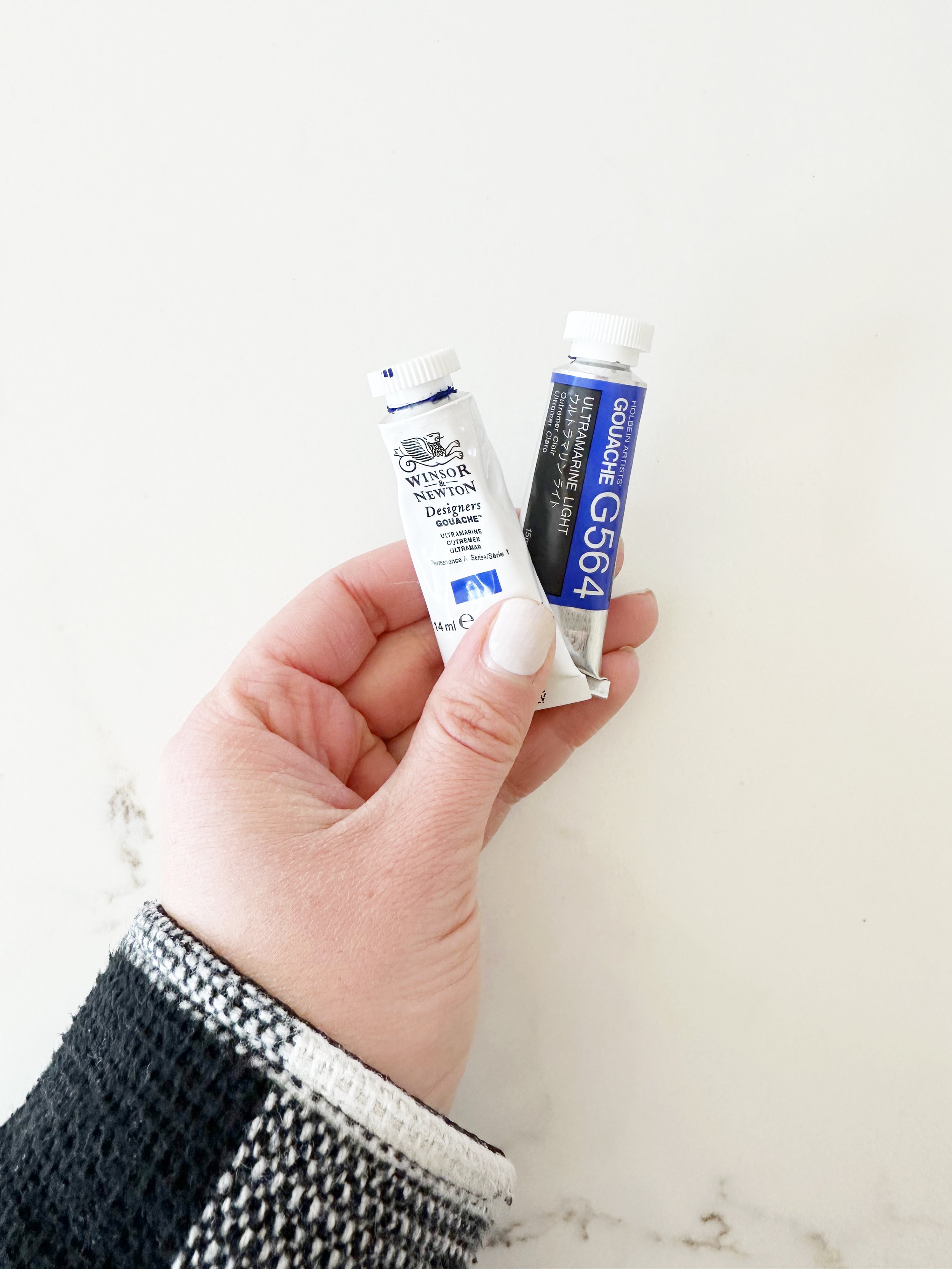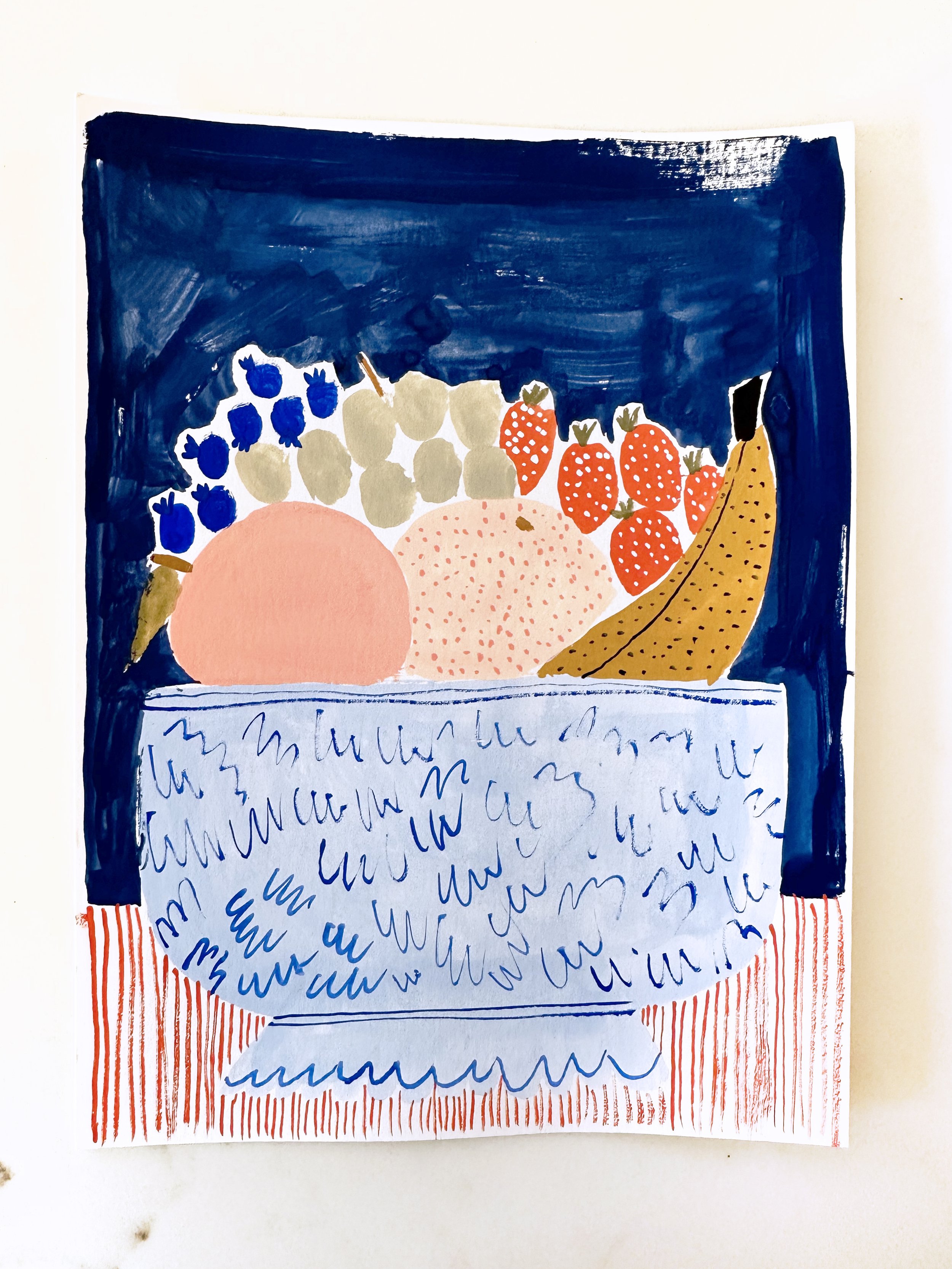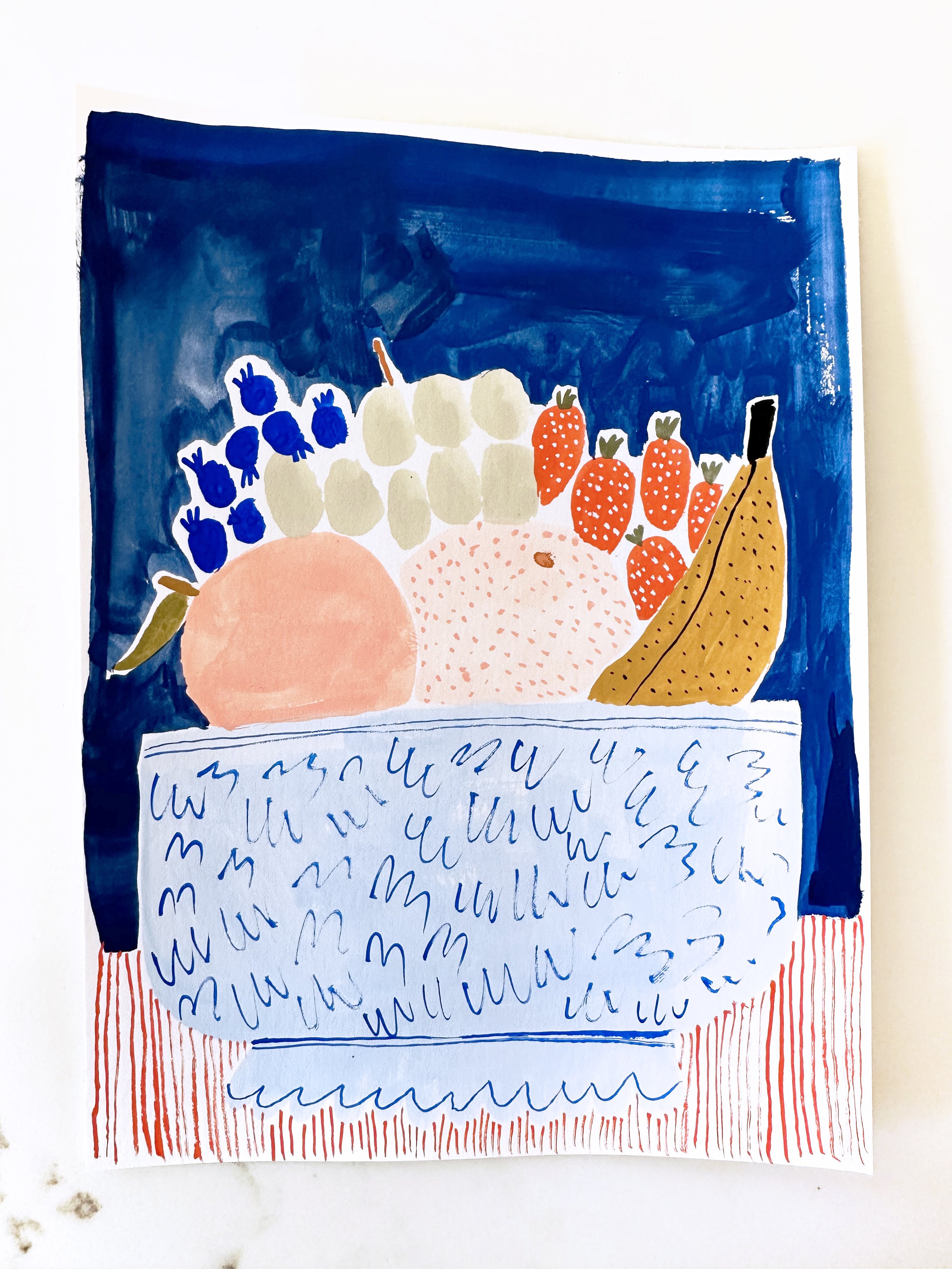Winsor & Newton vs. Holbein Gouache
If you’ve been reading along for a while, you know I’m a diehard Winsor & Newton fan. It’s not because I’ve tried other gouache brands though. Winsor & Newton was just the first one I picked up, and I instantly fell in love. For a while, it didn’t seem necessary to experiment with other brands. Why fix what isn’t broken?
Well, over the years, I’ve heard chatter about Holbein being the best brand. Recently, my curiosity got the best of me. What if Holbein is actually the best brand and I’ve been missing out all these years? Since I paint so much, the experiment seemed worth it.
My Experiment
In order to test the brands against one another, I painted two identical paintings with comparable colors from each brand.
Here are the colors I used from Winsor & Newton:
Permanent White
Lamp Black
Ultramarine
Cadmium-free Scarlet
Yellow Ochre
And here are the colors I used from Holbein:
Permanent White
Primary Black
Ultramarine
Cadmium Scarlet
Yellow Ochre
My two paintings:
Winsor & Newton Gouache
Holbein Gouache
Texture
I was surprised to discover this was the biggest difference between the two brands. Winsor & Newton has a goopy, toothpaste-like texture. Holbein has a more fluffy texture, similar to shave butter. At face value, I didn’t prefer one texture over the other.
However, I noticed the textures had a huge impact on how the paint applied. Because of its fluffy texture, Holbein was more sensitive to water. If you add just a little water, it almost looks like watercolor. You can see an example of this above in the apples. Winsor & Newton requires more water to get the same effect.
Because of this, I have a theory that watercolor artists would like Holbein better and oil/acrylic artists would like Winsor & Newton better. When I expressed this theory online, many artists agreed.
I noticed that the texture of the paints also really impacted detail work. When I applied little dots and thin line work, Holbein proved to be more consistent. I could get much smaller dots and thinner lines with Holbein. Winsor & Newton provided a more varied, hand-crafted look. You can see an example of this above in the strawberries, and in the pattern on the bowls.
That brings me to my second theory - beginners would like Holbein better because it gives the artist more control. There is less of a learning curve.
Winsor & Newton’s thick consistency allowed for more texture and variation in the paint application. It was easier to apply a dry brush effect (something I’m fond of). With Holbein, the paint went on more smoothly. You can see an example of this in the blue solid backgrounds above. In the end, the variation and texture of my Winsor & Newton painting made it look slightly more interesting and professional. I realize this could also be due to my lack of practice with Holbein though.
Opacity
Winsor & Newton wins the opacity award. Because the paint texture is thicker, it goes on thicker. You can add a lot of water, and still get an opaque effect. Holbein, not so much. You can get opaque paint with Holbein, but you can’t add much water at all. Again, Holbein can apply like watercolors, whereas Winsor & Newton functions more like an acrylic.
Saturation
I’ve heard many times that Holbein gouache is more saturated, however, I didn’t notice any difference between the two brands. Both had incredibly vibrant shades. The colors I purchased were almost identical.
Price
How far will a paint tube go for each brand? I originally thought Holbein gouache went further because the paint was lighter and stayed wet longer. However, if you’re going for an opaque look, Winsor & Newton will go further because the pigments seem to be more concentrated. It kind of just depends on your personal style.
Below are the prices I paid on Dick Blick for both sets of paints. I was surprised to find that Winsor & Newton is more expensive, which is something to consider.
Winsor & Newton
Permanent White (14.ml): $7.61
Lamp Black (14 ml): $12.69
Yellow Ochre (14 ml) : $7.61
Ultramarine (14 ml): $12.69
Cadmium-free Scarlet (14 ml): $17.21
*Average Price per 14ml Tube: $11.56
Holbein
Permanent White (15ml): $8.28
Primary Black (15 ml): $8.28
Yellow Ochre (15 ml): $8.28
Ultramarine (15 ml): $8.28
Cadmium Red (15 ml): $19.34
*Avg price per 15 ml tube: $10.49
So what’s my conclusion from this research? I still like Winsor & Newton better. However, I can see why people like Holbein. Your preference will simply depend on the style you’re going for. If you’re looking for a cleaner, more watercolor-like finish, I would suggest Holbein. I would also argue Holbein is easier to use, giving you more control. If you want a more textured, acrylic-like finish, I would suggest Winsor & Newton. Winsor & Newton gouache will give you a looser, less-refined look. Looseness is something I’m always seeking in my work these days, because my style has gotten more precise as I’ve evolved as an artist.
Personally, I could see myself using Holbein for some detail work, and Winsor & Newton for my base layer backgrounds. That would create the ideal look I’m going for.
I took a poll on Instagram after I posted this study, asking which brand people liked better. Surprisingly, Winsor & Newton seemed to be the favorite amongst my followers as well. Have you tried both of these brands. If so, which do you like better?















Thanks for stopping by! I’m an illustrator & writer. I’ve been running my own creative business since 2015. My mission is to help artists find their unique creative voice, build positive habits, and do what they love for a living.